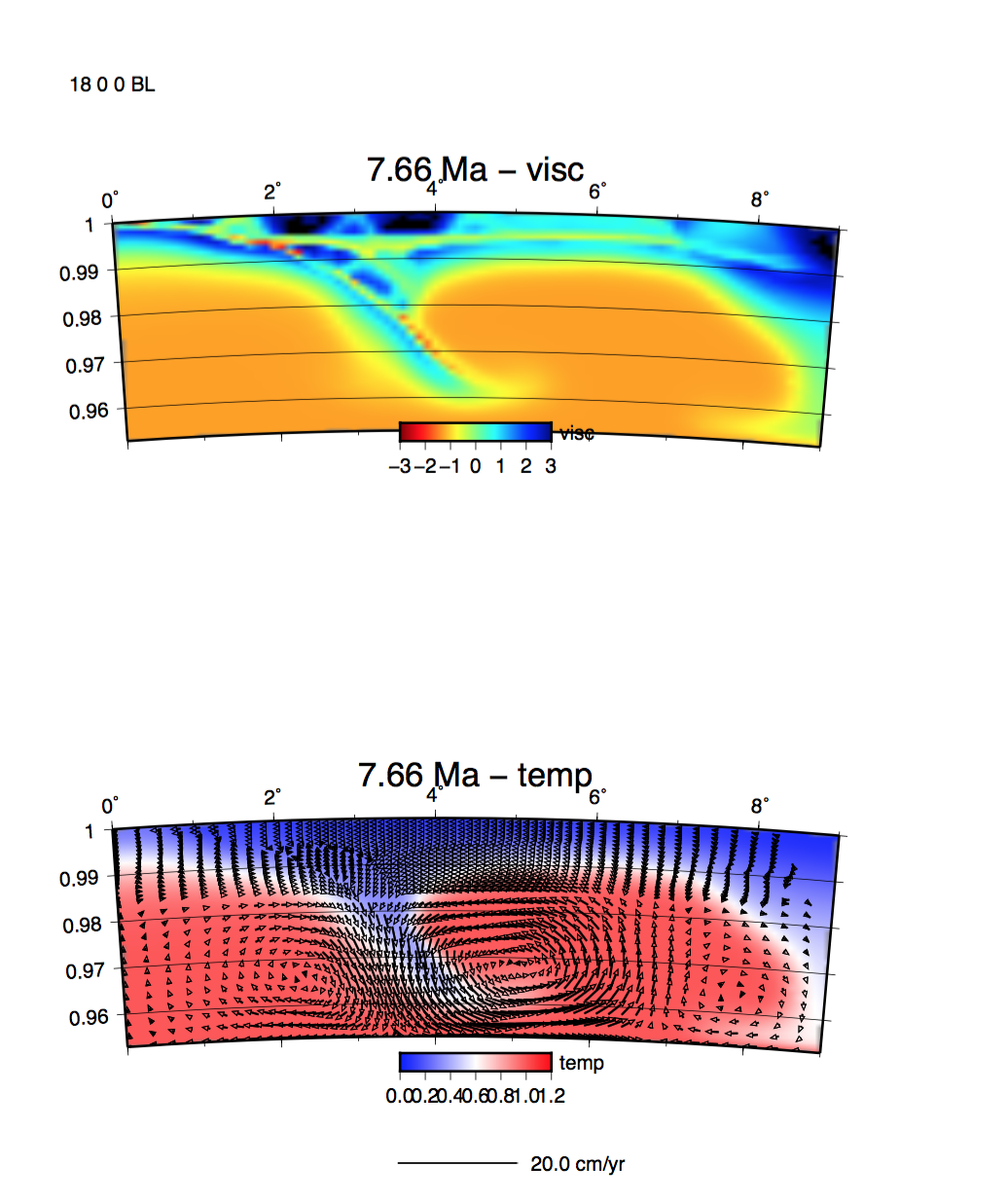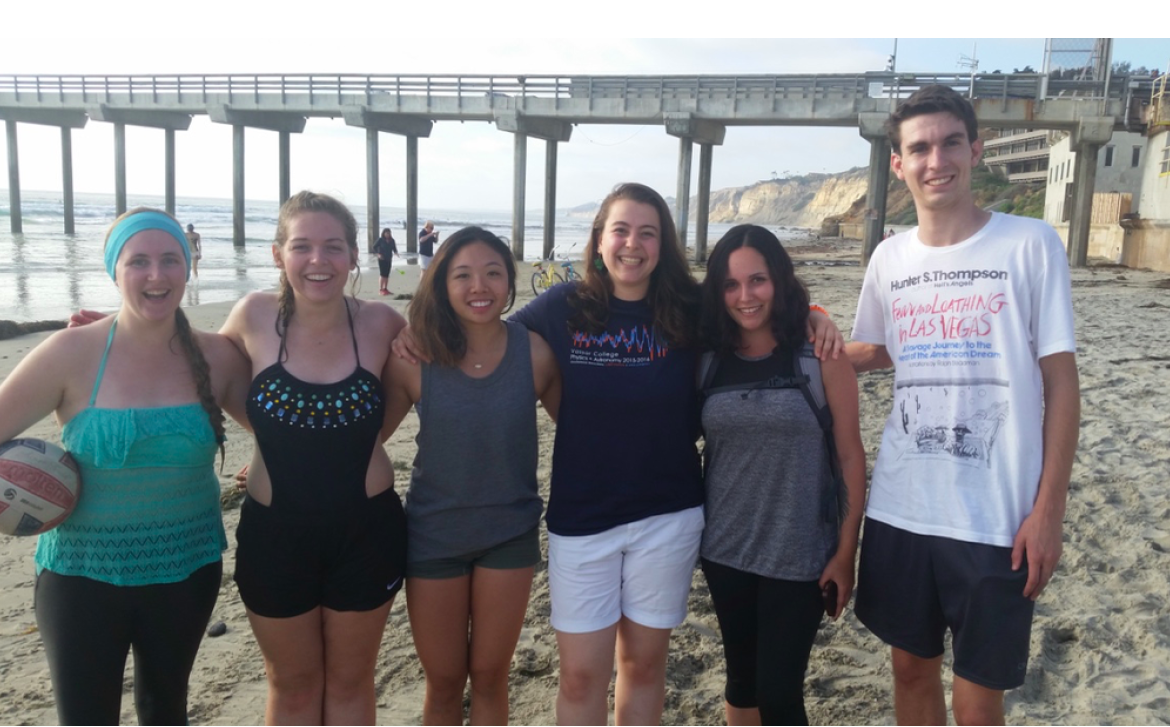Undergraduate research in geodynamics was given a boost this past year thanks to the GLADE (Geodynamics of the Lithosphere and Deep Earth) REU program that supported undergraduate research projects in computational geodynamics (Figure 1). The program, organized by Dave Stegman at Scripps Institution of Oceanography, brought together members of the geodynamics community to mentor 6 undergraduates at 6 universities across the nation. The program not only accomplished an impressive amount of research over the summer, but helped undergraduates gain valuable skills, experience, and confidence to further their careers. A goal of the program is to develop and recruit a larger number of potentially highly qualified applicants to PhD programs in geodynamics across the nation. Participants were recruited from non-geosicence majors and from traditionally underrepresented groups. The 2016 participants included 6 college Juniors (Figure 2) majoring in physics and enigineering. All have subsequently or had plans to apply to graduate school
The program began with orientation week at Scripps Institution of Oceanography from June 19-24, 2016. During this orientation participants received tutorials on high performance computing, numerical modeling using ASPECT, visualization using Paraview, and mapping using GMT. They toured SDSC and saw and received accounts on SDSC’s Comet supercomputer for use on their projects. They also received an intensive GRE prep course. They then ventured off to their host institution to complete 8 weeks of research returning to their home institution in time for their next academic year.
The finale of the program was attending the 2016 Fall AGU meeting in December, for a reunion and to present a poster describing their research project. The program also organized a meet up with the IRIS seismology REU participants, so they could network and learn about the experiences of several other peers.
A list of the participants and mentors, as well as the titles of the projects they presented at the 2016 Fall AGU is provided here:
Sarena D Robertson (Embry Riddle Aeronautical University) was mentored by Scott King (Virginia Tech) for her project “3-D Spherical Convection Modeling Applied to Mercury: Dislocation Versus Diffusion Rheology”
Megan Hansen (Colorado School of Mines) was mentored by Robert Moucha (U. Syracuse) for her project “Modeling Continental Rifts and Melting Under Precambrian Mantle Conditions: Effects of Mantle Potential Temperature and Rheology”
Nicole Pham (UT Austin) was mentored by Margaret Jadamec (Univ. Houston) for her project “Three-dimensional Numerical Models of the Alaska Subduction-Transform system and the Implications for Mantle Upwelling and Anomalous Volcanism”
Molly James (Vassar College) was mentored by Dave Stegman (SIO/UCSD) for her project “The Role of Viscous Coupling in Determining Subduction Style within Numerical Models of Mantle Convection”
Dani Giesy (UCLA) was mentored by Ikuko Wada (U. Minnesota) for her project “3-D Subduction Modeling: The Effects of Back-Arc Boundary Shape on Mantle Wedge Temperature”
Joshua Straub (Harvey Mudd) was mentored by Lijun Liu (Univ. Illinois Urbana-Champagne) for his project “Reconciling the Isabella Anomaly with Lithosphere Delamination and Basin & Range Extension”
Special thanks also goes to the 2016 GLADE selection committee (Thorsten Becker, Maxwell Rudolph, and Laurent Montesi) that chose the finalists for the program in April 2016. In addition, the program could not have been a success without superb mentors and great projects.
The 2017 GLADE REU program is now accepting applications for REU participants. For more information about any aspect of the program, including undergraduate applications or potentially hosting/mentoring an REU participant, please contact Dave Stegman (dstegman@ucsd.edu).
The GLADE REU program, supported by a grant from the National Science Foundation, included all their travel, a stipend and housing allowance at their host institution.
contributed by Dave Stegman

Figure 1. Cross section from Joshua Straub (Harvey Mudd) and Lijun Liu (Univ. Illinois Urbana-Champagne) showing delamination underneath the Sierra Nevada using Citcom. Preliminary results from their 2-D slab-lithosphere interaction model indicate that the foundering of an earlier accreted Farallon slab causes the surface to uplift and the overriding plate to extend. The model can potentially reproduce the main tectonic characteristics of the region, offering new insights on the evolution of the lithosphere-mantle system. See T41D-2969 2006 Fall AGU.
Figure 2. 2016 GLADE REU participants taking a well-deserved break during the Orientation Week at Scripps Institution of Oceanography: (left to right) Sarena D Robertson, Megan Hansen, Nicole Pham , Molly James, Dani Giesy, Joshua Straub.
My experience in GLADE was absolutely incredible. This program marked numerous "firsts" in my life: my first time conducting research, my first time living anywhere but Colorado, my first time in New York, San Diego, and San Francisco; and my first AGU conference, among others. Before GLADE, I was unsure if I was cut out to be a geoscientist and unsure what area of geophysics I wanted to specialize in. Since the program concluded with AGU in December, I feel so much more confident in my choice to study geophysics and the direction that I want my career in geophysics to go in. I feel so lucky to have been a part of GLADE, most notably for the incredible students I met in GLADE and the connections I made throughout the program.
--- 2016 GLADE REU Participant